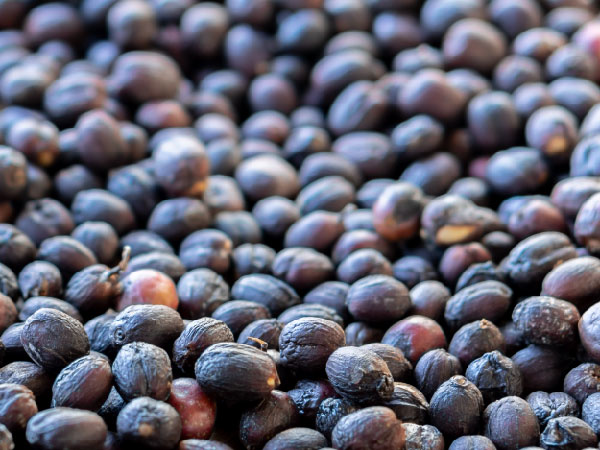At Gen10, we have recently been exploring some of the main factors in commodities traceability, including how it can protect organisations from risk, and the reasons why it is a bigger focus area than ever. Today we are zooming in on cocoa, one of the early movers in commodity traceability due to the industry’s long history of sustainability certification.
Traceability is a fundamental cornerstone of trading certified commodities, as clients need to have confidence that the cocoa they are buying meets the sustainability criteria that the certification represents. With a range of certified end-products available to consumers since the early 1990s, cocoa supply chains have had a long time to refine their processes and systems with traceability in mind and are still improving today – often with the help of modern technology.
Managing cocoa products under different certification schemes
Managing cocoa certification is not as simple as just knowing which stock is certified – there are several different schemes that may all need to be monitored across your operations. Rainforest Alliance and UTZ merged in 2018 so are aligning standards, but their certification schemes are currently running in parallel.
Fairtrade is the other major certification scheme, which maintains its own standards, and is not the same as the Fair Trade certification. And in addition to many other smaller cocoa certifications, there are also organic certifications that may help your organisation realise a price premium. This remains a niche product for now, but is expected to grow at an average annual rate of 6.8% through to 2028, with particular growth in Europe. Organic certifications are also varied; the EU and US schemes have agreed equivalences, but the Swiss scheme has its own rules and there may be other voluntary certifying bodies within each state.
Traceability in mass balance cocoa
Due to the challenges of maintaining separate supply chains for certified goods in cocoa operations, most sustainability certifications allow organisations to use mass balance calculations. Mass balance certificates mean that certified goods can be mixed with their non-certified counterparts, provided that the quantity sold as certified matches the certified quantity purchased.
Any commodity management system used for cocoa therefore needs to be able to log and track multiple certificates against counterparties and changing virtual lots. The system must also maintain these certificates when cocoa beans are processed into different semi-finished products including butter, liquor, and cake.
In addition to the financial calculations expected of any commodity management system, a good commodity management system for cocoa trading should help your team ensure their mass balance calculations are correct, with system checks to protect against operational errors. Good commodity management systems such as Gen10’s CommOS provide full traceability in this regard by automatically updating the digital audit trail every time an action is taken on any virtual lot.
Segregated supply chains and operational risk
Organic certifications usually require segregated supply chains, where certified products are kept physically separate from non-certified. Certification schemes such as Rainforest Alliance also have streams for different supply chain models that provide several levels of traceability including segregated supply chains, and there are a growing number of customers asking for this greater level of traceability and accountability.
There are usually cleaning routines that must be followed if these certified products are processed or stored after non-certified goods. This can introduce a lot of operational risk in terms of allocating shipments, processing, and ensuring that records are maintained so that the business can prove the supply chains were separate at audit.
Again, organisations need the right software in place to ensure they can maintain traceability across processing and attach the correct certificates to the right products. But it is in the field of operational risk that commodity management can provide the greatest support to these supply chains. In addition to CTRM functionality, commodity management includes many features to support logistics and operations, as well as automated checks and controls that reduce operational risk in the real world, and an automated digital audit.
Cocoa traceability to the farm level
Tracing cocoa to the farm level is incredibly difficult as 95% of the world’s cocoa is grown on small farms averaging between 2 and 5 hectares each. This means that farm-level reporting has historically been seen as too time-intensive and expensive, particularly as farmers often have low levels of internet literacy and access so self-reporting can be a challenge.
But traceability is becoming more important to end-consumers and clients, with more organisations investing in farm-level traceability. And again, technology is making this process faster and more efficient. For example, Gen10’s Aud.It app allows the digital surveying of 4,000 farms in West Africa, complete with GPS verification and supporting documents, all carried out in remote areas without Internet access, but instantly uploaded and shared across the business and with clients as soon as inspectors have Internet access, reducing data processing times by months.
Working efficiently
Although most organisations recognise the importance of cocoa supply chain traceability, the barriers to achieving it can be off-putting for many.
Achieving complete traceability is complex, and potentially error-prone, as even experts in the field have rarely been able to claim complete success. And particularly in the current climate of high inflation and looming recessions, the focus is on adding value to the business, not on creating more administration.
Commodity management technology can help organisations improve their traceability by simplifying this complexity, as well as reducing the risk of errors. A good commodity management system manages most of your certifications automatically as you process and combine shipments through your operations, making mass balance calculations easier than ever. And the operational checks and controls can help you ensure certificates and counterparty information are in date, as well as helping you to manage your real-world allocations – making even segregated supply chains easier to manage.
And rather than increasing administration, using a commodity management system to enhance traceability can help to reduce it. For starters, traceability across your organisation is automatic, with a digital audit trail that updates as you manage your real-world operations.
A good cocoa commodity management system allows businesses to manage their operations on the platform and integrate with ERP and accounting systems to not only reduce traceability admin, but to reduce complexity and improve efficiency across the entire organisation.
And it is not only internal teams that need to use this traceability information once it has been processed. A good commodity management system should allow you to easily share your data with clients in a range of different formats that can be tailored to how you do business.
If your current CTRM system is not supporting traceability within your organisation, what other processes is it also making less efficient? Discover how CommOS can help you improve traceability, and other business processes too.



